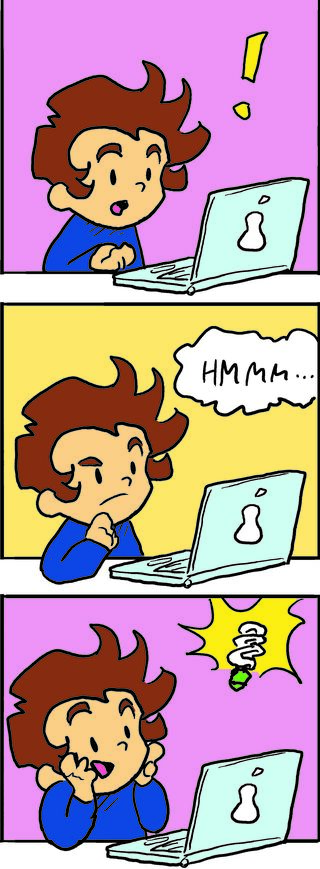Intelligence
Can Popular Video Games Improve Intelligence and IQ?
3 tips to boost intelligence and executive functions with video games.
Posted May 24, 2022 Reviewed by Michelle Quirk
Key points
- A recent study in "Scientific Reports" indicates that playing more video games was associated with gains in intelligence.
- Time spent on social media and passive screen time were not associated with any gains in intelligence.
- Practical, real world gains from video games require a more deliberate, intentional use of gaming that uses strategies to promote generalization.
Does your child spend hours playing Minecraft, Roblox, or Fortnite? Is it a complete waste of time? Probably not, according to a recent study published in Scientific Reports. The authors of this important new research conclude that children who played more video games at the age of 10 showed the greatest gains in intelligence and other cognitive skills at the age of 12. This study measured intelligence by assessing reading comprehension, vocabulary, executive functioning, attention, visual-spatial processing, and the capacity to learn over repeated trials. Essentially, kids who played more video games improved their intelligence and IQ scores. Interestingly, watching videos and involvement with social media did not have any positive impact on intelligence in this study. The study essentially stated that video games can make you smarter.
This study should be viewed with the understanding that kids are spending a lot of time playing video games and on their screens. Teens are spending nearly nine hours per day using video games, apps, social media, and other technologies. While some of this time is for school or research, most kids are spending almost four hours per day engaged in recreational screen use. Some of this is time is spent passively watching YouTube videos or bingeing on Netflix. These activities, according to the Scientific Reports study, may actually be related to lower levels of intelligence and cognitive functioning. Most of the remainder of recreational screen time is not shoot 'em up gameplay. Instead, most gaming is cognitively challenging using skills such as planning, organization, flexibility, and self-control, and the reason that your kids may learn from popular video gameplay.
From my perspective as a psychologist, the unleveraged brainpower required to beat video games could serve another purpose. After all, the best games—the ones kids want to play—are not easy and require problem-solving, critical thinking, and executive functioning skills. You need to use your brain! Because the popular games are fun, players are motivated to challenge themselves to reach new and higher levels and to use a variety of neurocognitive skills to get there. Cognitive skills such as multiple object tracking and resistance to visual interference are used in response to game demands and are among the many cognitive skills that may improve with gameplay. Evidence that gameplay improves cognitive functioning derives primarily from studies of action-based games where these skills are challenged. These cognitive changes essentially result from the engaging and repetitive exercise of specific brain-based skills.

Using Metacognition
However, there is a more powerful way to translate game time into improved cognitive skills. It’s a bit more work and requires the deliberate intention to learn from gameplay. This approach requires the use of metacognition, or "thinking about thinking." Metacognition is widely accepted as the single most important component of applied learning. Video game players who think about their gameplay, deliberately consider their game actions, and respond to game feedback are using skills that they can apply in the real world. This approach may be better suited for strategy, puzzle, sandbox, simulation, and role-playing games (RPGs) since these games directly demand the use of critical thinking and problem-solving.
3 Tips to Boost Intelligence and Executive Functions With Video Games
Video games provide a powerful opportunity for learning because of the level of children's attention, persistence, and resistance to frustration. The addition of these three additional steps is crucial to making game-based learning into real-world skills. These steps sound simple, but they require that gamers either intentionally take these actions or are guided in how to do so. They are based upon well-regarded, evidence-based research on teaching children with learning differences.

These three simple steps (detect, reflect, and connect) make intuitive sense to students, can also be applied to non–screen-based learning, and are easy to remember. If you want to learn something, you have to pay attention or identify (detect) what you are trying to learn, recognize and think about (reflect) how it is helpful, and then learn to use or apply (connect) this knowledge to many situations.
At its core, detect, reflect, and connect are the basis for the transfer or generalization of learning. Children learn real-world skills by being able to identify the skills they are using and then practice and use these skills in another setting. These types of skills are not robotic, automatic, or a simple response to a stimulus but are the skills necessary for children growing up in the 21st century.
The "detect" component is about identifying the skill. Some students readily see when they are using a specific soft skill and how it helps them. For example, children who organize their backpacks before starting homework recognize that this will help them find and complete all their work. Many others would need instruction in order to identify skills that may have helped them in the past. Before they can know how to use a skill in a new area, they need to be able to identify, or “detect,” when they used it successfully in the past.
The "reflect" step helps with evaluating decision-making and actions. This is a cognitive process that requires youngsters to assess how a skill has helped them in previous settings and how it might help them in other situations. Reflection helps with looking at the components of the skill, determining when it was applied, and making the connection with how those skills were effective in solving a particular problem. The action of the "reflect" step also involves the capacity to be flexible and learn from mistakes. Individuals who “reflect” use a metacognitive or “thinking about one's thinking” approach. Metacognition has been identified across dozens of studies as one of the most significant tools for learning, performing well on tests, and retaining knowledge.
The "connect" step facilitates the use of the acquired skill in a variety of situations. One of the biggest shortcomings of many learning opportunities is the inability of learners to take what they have learned in one situation and apply it to another. This application requires practice. The "connect" step helps people to take something they learned in one situation and use it effectively in another. Parents and educators often forget that the "connect" step is most effective when they guide kids in applying it in new settings.
References
Berard, A. V., Cain, M. S., Watanabe, T., & Sasaki, Y. (2015, March 25). Frequent video game players resist Perceptual Interference. PLOS ONE. Retrieved May 23, 2022, from https://journals.plos.org/plosone/article?id=10.1371%2Fjournal.pone.012…
Merrill, M. D. (2019, August 14). First principles of instruction. Retrieved May 23, 2022, from https://mdavidmerrill.wordpress.com/publications/first-principles-of-in…
Sauce, B., Liebherr, M., Judd, N., & Klingberg, T. (2022). The impact of digital media on Children’s intelligence while controlling for genetic differences in cognition and socioeconomic background. Sci Rep, 12. https://doi.org/10.31234/osf.io/jtwk7
Veenman, M. V., Van Hout-Wolters, B. H., & Afflerbach, P. (2006). Metacognition and learning: Conceptual and methodological considerations. Metacognition and Learning, 1(1), 3–14. https://doi.org/10.1007/s11409-006-6893-0




